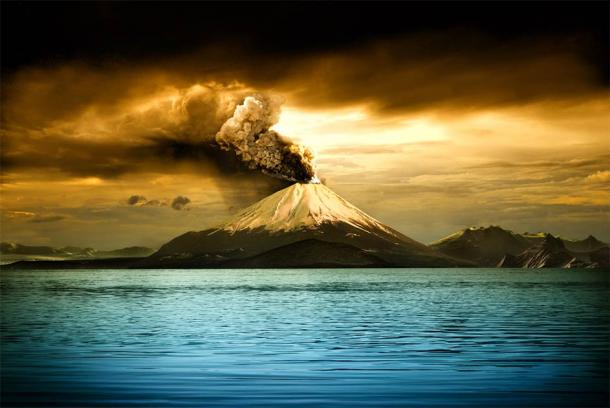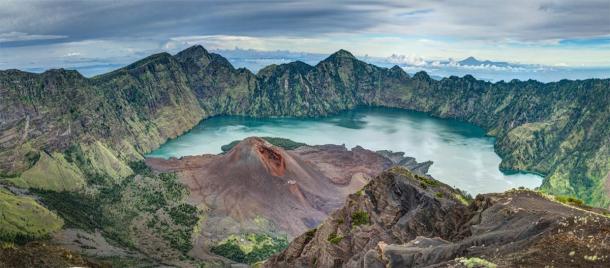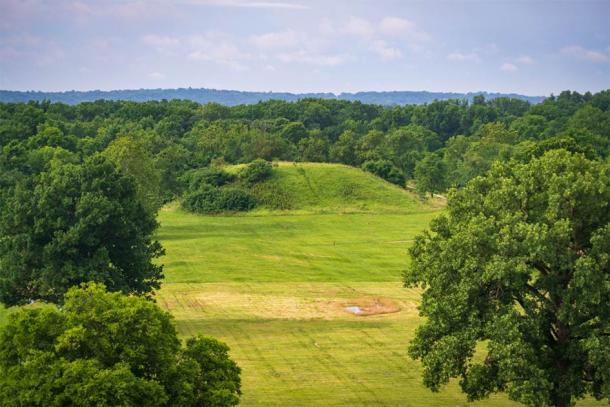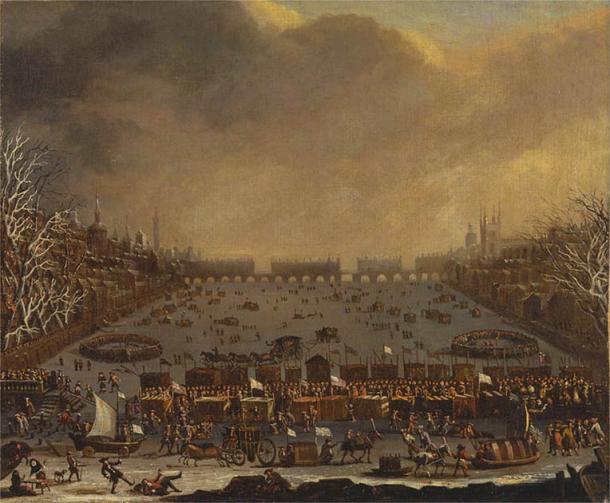The Little Ice Age is a period tentatively defined as running from the 13 th/14th to the 19 th century in which the northern hemisphere of Earth endured a limited but substantial cooling period. Now please be forewarned, the Little Ice Age (LIA) should not be confused with the Medieval Warm Period, or the Last Glacial Period , since it carries its own unique events that may have changed the course of history for many human cultures around the globe.
Unlike the previous ice ages and warm periods, which caused havoc to the environment and forced humanity to change its survival methods, the Little Ice Age had varying effects. Some regions of the world were severely affected, leading to war, famine, disease, and even abandonment. While other areas became plentiful and prosperous, both benefiting and lending favorable conditions to strengthen various human civilizations. Though there is no conclusive evidence to explain why this phenomenon happened, there is a working hypothesis to what may have caused it.
The primary culprit may have been the 1257 Mount Salamas eruption, which took place in Lombok, Indonesia. After this one single event, countries around the world were affected in different ways. It appears that the eruption shaped culture and technology for the societies that experienced it. And perhaps, these changes had a significant impact on these cultures and countries themselves.

Could the 1257 Mount Salamas eruption, in Indonesia, have created the era known as the Little Ice Age? ( niyazz / Adobe Stock)
The Ripple Effect of the Salamas Volcanic Eruption
Though there is much debate regarding what might have caused the sudden drop of temperature during that time, many scholars believe the Little Ice Age may have correlated with the Mount Salamas volcanic eruption which occurred sometime between 1257 and 1258 AD. This single catastrophic event was considered one of the largest eruptions ever recorded during the Holocene Epoch. As the volcano erupted, it created pyroclastic flows, the term for fast-moving currents of hot gas and volcanic matter. This immense event buried most of Lombok and even reached neighboring islands.
The eruption caused many casualties, including several human habitations and Pamatan, the Lombok capital. The explosion was so immense that ash and rock fell over 340 kilometers (211 miles) away in Java. Eye-witness accounts were recorded on palm leaves that were eventually formed into the Babad Lombok, a palm leaf manuscript containing the history of Lombok. With this one event, an entire civilization was changed forever. However, it was not until recently that archaeological scientific techniques were able to further confirm what was written in the Babad Lombok. Lavigne et al., in an article from 2013, mention “estimates based on sulfate deposition in these records suggest that it yielded the largest volcanic sulfur release to the stratosphere over the last 7,000 years.”
Lavigne et al. mention several other interesting facts discovered by analysis of ice core from the artic, tree ring samples, and radiocarbon dating among the regions of Lombok. One of these was the discovery of huge amounts of pyroclastic flow deposits as far as 25 km (15.5 miles) from the suspected volcano. Shards taken from the Arctic and Antarctic ice cores revealed immense tephra dispersal associated with the eruption. Evidence of a lost medieval civilization was also found in that region.
Investigations of historic records of the time also reveal that eruption did not only affect the natural environment, but also had profound socio-economic implications. Lavigne et al. mention, for example, that:
“This finding might provide insights as to the reasons why the Javanese King Kertanegara, who invaded Bali in AD 1284, did not encounter any resistance by the local population. The Babad Lombok indicates that the eruption of Mount Salamas destroyed Pamatan, the capital of the Lombok Kingdom. We speculate that this ancient city lies buried beneath tephra deposits somewhere on the Island.”
If the ruins of Pamatan were ever to be found, they would provide great historical insight into Indonesian culture during the 1200s. Though this particular southern east Asian region was definitely affected by the eruption of Mount Salamas, other places worldwide were equally affected by the catastrophic ash that was released into the atmosphere. As the ash and rock devastated the Lombok Kingdom, it then moved onwards to affect the rest of the world over the next few hundred years, changing the climate and temperatures worldwide between 1200 and 1830. Some argue that it may have caused the Little Ice Age, with prolonged cold and dry periods throughout various regions of the world.

Lake Segara Anak is a crater lake created during the volcanic eruption of Mount Samalas on Lombok Island in Indonesia in 1257. Scientists argue that this eruption could have caused the Little Ice Age. ( venca1983 / Adobe Stock)
Effects of the Little Ice Age in the Pacific Islands and Hawaii
In the Pacific Islands, the earliest signs of the Little Ice Age’s effects were felt as sea levels decreased between 1270 and 1475, caused by a a drop in temperatures. Further information from the analysis of coral reef records revealed that intensified fluctuating heating sea temperatures, known as El-Nino Southern Oscillations, reached its extremes sometime in the mid-seventeenth century.
There has been a longstanding debate amongst scholars and archaeologists in Hawaii, as they attempt to discover when and why its statehood came about. Some suggest that the Little Ice Age did in fact have a massive effect on the social politics of its people in the late 15 th century. Von Kirsch has surmised that it may have given rise to Hawaii’s transformation from a chiefdom to a state due to shifts in climate and rainfall patterns.
The climatic shift allowed for the expansion of agricultural production. With the fruitful fertility brought about by the fluctuation of warm and dry weather followed by long heavy rains, it may have provided an ample excess of food which allowed Hawaiian society further develop specification among its crafts, trades, food, and culture. This in turn, argues Von Kirsch, led to the rise of its states and its firm organizational structure and governmental systems that remained intact until 1893.

Famines wreaked havoc on China due to dry and cold weather caused by the Little Ice Age. Many historians argue that this helped bring down the Ming dynasty, whose last Emperor reigned from 1627 to 1644. ( Public domain )
Drought and Famine in China: Downfall of the Ming Dynasty
In China, the effects were felt through the process of many droughts and famines between the 1300s and 1600s. However, of all the famines and droughts to ever affect it, one of the most severe occurred during the later years of the Ming dynasty (1368 – 1644). During the 17 th century, under the Ming Wan Li era, famines wreaked havoc throughout northern China due to unusually dry and cold weather. This resulted in a limited produce growing season.
As seen with many other empires throughout the world, once a limited food supply is established, a series of calamities tend to follow. China witnessed civil disarray, military warfare, and increases in taxation, with the aim of keeping the peace and attaining whatever resources there were to be had. By the 1630s, the Ming dynasty soon fell into chaos and disarray, leaving them ripe for their eventual take over by the Jurchen Manchu. Many historians have agreed that the Little Ice Age had a significant role to play in this. Had it not been for this change in climate, the Ming might have remained in power.
The Rise, Fall and Migration of Civilizations in the Americas
In the arctic rim of Northern America, the effects of the Salamas eruption were felt just as strongly with the Little Ice Age causing changes in the environment. Like in Hawaii, the changes were positive for human habitation. As mentioned by the scholars Mason and Frieson, the fluctuating stormy weather brought forth by the changing climate created perfect conditions for the mating and spawning of salmon, creating a surplus of food for these barren artic ice regions.
In the lower region of North America , near the Midwest and Minnesota, it was apparent that from the 1200s onwards, the region experienced a significant cooling which correlated with the northward expansion of the Messapian culture (Gibbons, 2012). Climate change made territories more traversable and fruitful for pasture and crops, opening the door to massive human cultural movement. Near the upper Mississippi River region, the climate may have been affected differently, leading to drought, while the upper north became more plentiful. In other areas such as the Piedmont village cultures along the Dan River valley, household sizes began to grow from 1200 onwards, revealing a potentially prosperous time.
Research of Cahokia, the pre-Columbian Native American civilization, which existed near modern-day St. Louis , Missouri, suggests that their population somehow declined during the 1300s, only to be repeopled by other American indigenous tribes. From that point on, it appeared to expand, reaching its maximum by 1650, only to suddenly decline for mysterious reasons. By the late 16 th century, it appears that environmental changes brought challenges for game hunting and agriculture. With the growing harshness environment, there may also have been massive floods some time between the 1300s and 1400s.
Though the Little Ice Age in the Americas may have appeared beneficial and pleasant initially, the later years leading to the 17 th and 18 th centuries created some of the harshest climatic disasters yet experienced. In southern Minnesota regions, warfare and the spread of disease created societal tensions leading to migration northward and westward throughout the continent. In the Southwest, climate change may even have been responsible for horrific instances of cannibalism. In South America, the temperatures between 1340 and 1640 were cold and moist, with prolonged periods of rainfall. Additionally, during this time, two major southern Antarctic glacial advances appeared to have occurred, first between 1270 and 1380, and then from 1520 and 1670.

The population of Cahokia, a major pre-Colombian Native American urban settlement, was abandoned around 1300. Some argue that climate change caused floods and a demise of agriculture. ( Zack Frank / Adobe Stock)
Did Climate Change Play a Role in the Disappearance of the Great Zimbabwe?
As with everywhere else on Earth, the immense continent of Africa was just as affected. Some of the best scientific records from South African sediment cores and recorded water levels from the equatorial eastern rift valley brought scientific evidence revealing intervals of dry weather between 1000 and 1200, followed by intense wetter periods between 1400 and 1750. Most of these climatic periods correlate with the periods of the Medieval climate anomaly and with the Little Ice Age. Most of Eastern Africa was effected by drought, followed by a sudden upswing of wetness and stormy weather.
One of the most interesting African civilizations that correlated with the occurrence of the Little Ice Age was the abandonment of the Kingdom of Zimbabwe , which had flourished through the trade of ivory, gold, copper, and iron. Eventually, the Kingdom of Zimbabwe soon became eclipsed in 1430 by Prince Nyatsimba Mutota in his military campaigns against Tonga and Tavara. In his success, he had secured further salt trade routes and then established the Kingdom of Mutapa. His kingdom then eclipsed Zimbabwe leading to its abandonment. Though most of history would claim that this was due to military campaigns and civil unrest, given the effects of the Little Ice Age had over a lot of Africa, perhaps the climate had a role to play in Zimbabwe’s disappearance.

Recreational winter festivities, such as the River Thames frost fairs, took place when the weather was so cold as to freeze the water. This occurred during the Little Ice Age, between the 17 th and 19 th centuries. ( Public domain )
Big Chill of the Little Ice Age and Its Effects in Europe
In Europe, the Little Ice Age may have been responsible for the freezing of the Baltic Sea, the destruction of livestock, poor crop growth, and the spread of disease. With these destructive elements of frigid weather came the spread of violence, social unrest, and prejudice arose potentially as people looked for scapegoats for the effects of climatic changes. Archaeologists have found evidence of mass burials, with corpses numbering the thousands, within 13 th century London that may have been due to starvation and disease brought by climate change . During winter, the freezing of harbors, rivers, and lakes became the norm in many Western European countries.
For many of the European countries that depend on their local crops, these climatic changes were devastating, creating panic, starvation, and warfare due to the uncertainty of crops and agriculture. But, while many died due to the panic and social disarray caused by climatic change , other European cities flourished thanks to their reliance on trade and commerce. Building relations with regions that were benefiting from the environmental changes had become crucial. Expansion for the control of trade routes and passages became more important than seizing treasure or land. By the late 1400s and 1500s, European global exploration was at its height, not just in the interest of conquest but also to secure trade routes of spices and minerals to be brought back to their homes previously devastated by the Little Ice Age.
The onslaught of the Little Ice Age brought both disaster and opportunity to various countries and cultures globally. Though it is still under scrutiny what may have caused it, it appears that this chilling era was caused by a single massive eruption of Mount Salamis in 1257. What would have happened to humanity, had this one single event never taken place?
Top image: Colder winters in parts of Europe were one of the effects of the Little Ice Age. Rivers, such as the Thames in England, froze so much that people would ice skate and enjoy winter festivals. In the image, the 1677 painting The Frozen Thames by Abraham Hondius. Source: Public domain
By B. B. Wagner
References
Gibbon, Guy. 2012. Archaeology of Minnesota – The prehistory of the Upper Mississippi River Region . Minnesota: University of Minnesota Press.
Guillet, Sebastien, et al. 2017. Climate response to the Salamas Volcanic eruption in 1257 revealed by proxy records . 23 January. Available at: https://www.nature.com/articles/ngeo2875?proof=trueNov.
Jones, Eric E, Maya B Krause, Caroline R Watson, and Grayson O’saile. 2020. “Economic and Social Interactions in the Piedmont Village Tradition-Missippian Boundarylands of Southeastern North America, AD 1200-1600.” In American Antiquity 85 (1): 72-91.
Lanchester, John. 25 March 2019. How the Little Ice Age Changed History. Available at: https://www.newyorker.com/magazine/2019/04/01/how-the-little-ice-age-changed-history
Lavigne, Franck, et al. 15 October 2013. Source of the great A.D. 1257 mystery eruption unveiled, Samalis Volcano, Rinjani Volcanic Complex, Indonesia . Available at: https://www.pnas.org/content/110/42/16742
Mason, Owen K, and T. Max Frieson. 2017. Out of the Cold – Archeology on the Artic Rim of North America . Washington D.C.: The SAA press.
Ricardo, Villalba. 1994. “Tree-ring and glacial evidence for the medieval warm epoch and the little ice age in Southern South America.” In Climatic change (Springer Science and Business Media LLC) 26 (2-3): 183-197.
Russel, J.M., and T.C Johnson. 2007. “Little Ice Age drought in equatorial Africa: Intertropical Convergence Zone migrations and El Nino – Southern Oscillation Variability.” Geological Society of America (Geology) 35 (1): 21-24.
Von Kirch, Patrick. 2012. A Shark Going Inland Is My Chief The island civilization of Ancient Hawai’i . Los Angeles: University of California Press.
White, A.J., Samuel E Munoz, Sissel Schroeder, and Lora R Stevens. 2020. “After Cahokia: Indigenous Repopulation and Depopulation of the Horseshoe Lake Watershed AD 1400-1900 .” American Antiquity 85 (2): 263-278.
Related posts:
Views: 0
 RSS Feed
RSS Feed















 September 26th, 2020
September 26th, 2020  Awake Goy
Awake Goy  Posted in
Posted in  Tags:
Tags: 
















